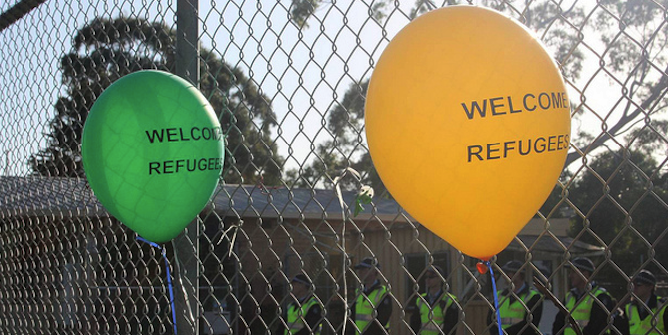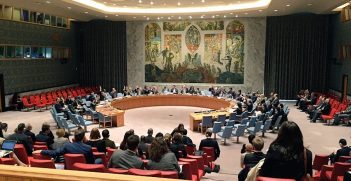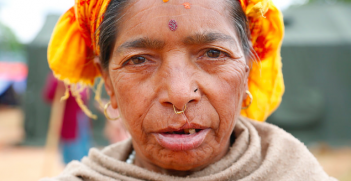How Can Australia’s Refugee System Combat LGBTIQ Violence?

Australia condemns discrimination on the basis of a person’s sexuality both at home and abroad. Victims of sexuality-based violence are increasingly finding themselves on our doorstep, but escaping discrimination in Australia is not necessarily possible for refugees.
In August 2013, Australia amended its Sex Discrimination Act to make discrimination on the basis of a person’s sexual orientation, gender identity and intersex status against the law. This is also a core aspect of Australian foreign policy, which actively condemns homophobic violence overseas. Despite this, the situation with LGBTIQ (lesbian, gay, bisexual, transgender, intersex or queer) asylum seekers in Australia is one rife with inequality.
The struggle of any refugee is difficult, but the struggle for an LGBTIQ refugee is often worse. Academic studies have shown that LGBTIQ asylum applications have a very high rejection rate. Whilst these asylum seekers are waiting in detention they are also often the subject of homophobic violence.
As the situation for LGBTIQ people deteriorates in Bangladesh, for instance, it becomes all the more crucial that they can seek protection as refugees elsewhere. But, sadly, Australia does not seem to be a welcoming place of refuge. It comes as no surprise that LGBTIQ asylum seekers from Bangladesh may be reticent and guarded about their sexual orientation. In a week where the gay editor of Bangladesh’s only LGBTIQ publication and his friend, a gay actor, were hacked to death in the editor’s home, we should pause to think about the effect that our policies are having on LGBTIQ asylum seekers. Same-sex intercourse is still illegal in Bangladesh, and Human Rights Watch has reported that the situation for LGBTIQ people is deteriorating as activists are required to be more cautious about what they do and how they present themselves. Unfortunately, Australia has a long history of rejecting asylum applications from Bangladeshi asylum seekers.
On 15 February 2016, the Federal Circuit Court handed down the decision of SZVJY and Minister for Immigration and Border Protection. This case was about a Bangladeshi man, SXVJY, who made an asylum claim in January 2013 on the grounds of being gay. SXVJY’s claim was rejected the first time because he had “provided an unconvincing account of his sexual history…[and] he had not engaged in any homosexual activity since arriving in Australia”. This initial decision was appealed to the Administrative Appeals Tribunal (AAT) which also rejected the application. The AAT added to the reasons of the first decision maker by saying that it doubted the SZVJY’s claims that “he fled Bangladesh because of the suicide of his boyfriend”. The AAT also doubted his claims about regularly attending gay clubs and his fears of physical violence both in Australia and Bangladesh.
When this decision was appealed to the Federal Circuity Court, the judge agreed with the tribunal’s decision to reject SZVJY’s application. He followed similar reasons to the AAT, but focused especially on the point that SZVJY was unable to correctly identify the gay clubs that he said he attended in Sydney. SZVJY said that he attended the “Toolshed” and “Stanwell” often alone throughout 2013 when he was not working. He did not approach anyone or make any advances because of the cultural barriers, he also just did not feel comfortable doing so. The judge pointed out that the Toolshed was an adult sex shop and that the club in Oxford Street is called Stonewall not “Stanwell”. The judge therefore argued that SZVJY was not a credible witness, based on his inability to correctly name the gay nightclubs that attended and his admission that he had not had a relationship since coming to Australia despite clubbing frequently. The judge concluded that SZVJY was not actually gay and rejected his asylum application.
The judge’s analysis is extraordinary on many levels and is sadly characteristic of the way that Australian courts deal with cases brought forward by LGBTIQ asylum seekers. Not only did he completely ignore the self-identification of the asylum seeker, but he also dismissed potentially traumatic events in the asylum seeker’s life. Ultimately the case hinged on his incorrect pronunciation of an English word (he was not an English speaker) and misidentification of another venue as a club, when it was a sex shop. LGBTIQ asylum cases are addressed with a lack of awareness of cultural differences in sexual orientation and with little regard to the lived experience of LGBTIQ people.
Whilst the plight of asylum seekers in offshore detention camps is important, we must not forget the people who are still being processed onshore. LGBTIQ people in many places around the world still face the criminalisation of their conduct, homophobic violence and alienation from their family and friends. As the case of SZVJY shows, Australian refugee law is broken when it comes to LGBTIQ asylum seekers. This means that we are sending people like SZVJY back to countries like Bangladesh. Something needs to change, and soon, to ensure that countries like Australia provide the protection that these asylum seekers so desperately need.
Josh Pallas is a researcher at the University of Wollongong working on issues of gender, sexuality and law. You can contact him via Twitter: @joshpallas
This article is published under a Creative Commons Licence. It may be republished with attribution.





